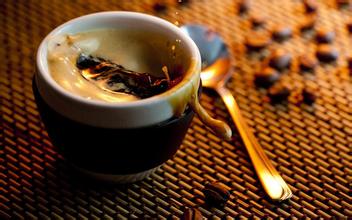Varieties and characteristics of Kenyan Coffee beans introduction to taste treatment of manor brand flavor description
Varieties and characteristics of Kenyan Coffee beans introduction to taste treatment of manor brand flavor description
The geographical environment of Ethiopia is very suitable for coffee growth. Coffee is mainly grown in the southern highlands between 1100 and 2300 meters above sea level. The soil in these areas is well drained, slightly acidic and red loose. Currently, about 25% of the Ethiopian population depends directly or indirectly on coffee production for a living. The majority of farmers use traditional planting methods. Artificial care of coffee trees, the use of organic fertilizers, do not use harmful pesticides and herbicides, etc. Therefore, most of the coffee produced in Ethiopia is organic coffee.
The natural characteristics of coffee beans include size, shape, acidity, texture, taste and aroma. Ethiopian coffee beans are small, fragrant and sour like wine, and are loved by coffee lovers. Because of its unique aroma and taste, it is often used in the production and variety improvement of beverages, ice cream and sweets.
Due to different planting methods, coffee can be divided into three types: forest-semi-forest coffee (Forest or semi-forest coffee), courtyard coffee (Garden coffee) and plantation coffee (Plantation coffee). 60% of the coffee belongs to forest-semi-forest coffee. In such a wild coffee forest, pesticides are not used at all, but biological methods are used to control pests. 35% of the coffee is courtyard coffee. In this kind of coffee garden, the planting is three-dimensional. Coffee is located in the lower layer and gets a suitable growth environment in the shade of other crops. Fertilizers are mainly fallen leaves, withered grass and animal manure. 5% of the coffee belongs to plantation coffee. This is a modern way of planting, coffee is also grown into a forest, but the use of new varieties
Geisha (Central America) Rose Summer Geisha (Geisha is a kind of coffee endemic to Panama. In recent years, it has been known as the "boutique queen" in just a few years. It can be regarded as the treasure of Panamanian coffee. At present, the output is low and the price is high. Coffee farmers claim to have only discovered it in recent years, but this is not the case. Geisha not only appeared in Panama as early as 1960. And many breeding units in Panama also have a lot of Geisha seeds. Willem Boot predicts that there will be a substantial increase in the number of Panamanian Geisha varieties of coffee in five years, and recommends that roasters not be in a hurry. In 1931, it was found in southwestern Ethiopia, where there are many different names, such as Gesha. It was imported to Kenya in 1931 and 1932 under the name of Abyssinian and Geisha respectively. In 1936, Kenya took the harvested Geisha seeds to Uganda and Tanzania for planting. In July 1953, Tanzania sent its offspring to Costa Rica, leaving the mother tree in its own country. In 1960, Geisha was formally cultivated in Panama through CATIE. Geisha has a good aroma, sweet and clean finish, distinctive fruit flavor, with bright sour fruit flavors, such as tamarind, mango and papaya, which are very supple and can be compared with Ethiopian water-washed beans. )
Java Java (Robusta) is mainly distributed in African countries such as C ô te d'Ivoire, Angola, Madagascar, Philippines, Vietnam and Indonesia (Java). It belongs to lowland cultivation, which is resistant to high temperature, drought, rain, insect pests and strong adaptability. it can grow very well on flat land, and harvesting does not necessarily need manual work, but can be carried out completely by vibration machine. There are two types of Robusta coffee that we often come into contact with: A.P. Robusta and W.I.B. Robusta. Except for W.I.B. The granules are larger and the others are smaller. The biggest difference lies in the processing after harvest, so there are some differences in appearance, aroma and taste. )

Important Notice :
前街咖啡 FrontStreet Coffee has moved to new addredd:
FrontStreet Coffee Address: 315,Donghua East Road,GuangZhou
Tel:020 38364473
- Prev

Introduction to varieties of Ugandan Coffee produced by Flavor description, Grinding scale and Taste treatment
Description of Ugandan Coffee Flavor description, Grinding scale, Taste treatment Variety introduction in Uganda Coffee production area varieties are generally good as long as raw beans are not 100 or yellowed, with low ripe fruit aroma, such as red wine taste, and thick mellow thickness, similar to some Kenyan beans with low flavor, but also with a mild soil flavor, so in terms of flavor characteristics.
- Next

Introduction to Coffee planting and Primary processing of Ethiopian species and characteristics of Manor
Characteristics of Coffee cultivation and Primary processing in Ethiopia ET has long been one of the top ten coffee producing areas in the world, and is a pioneer in Africa. ET has a federal department, the coffee and tea Authority, that specializes in coffee and tea-related matters, such as setting purchase prices for washing plants. ET produces a lot of coffee, but it is different from other producing countries.
Related
- Detailed explanation of Jadeite planting Land in Panamanian Jadeite Manor introduction to the grading system of Jadeite competitive bidding, Red bid, Green bid and Rose Summer
- Story of Coffee planting in Brenka region of Costa Rica Stonehenge Manor anaerobic heavy honey treatment of flavor mouth
- What's on the barrel of Blue Mountain Coffee beans?
- Can American coffee also pull flowers? How to use hot American style to pull out a good-looking pattern?
- Can you make a cold extract with coffee beans? What is the right proportion for cold-extracted coffee formula?
- Indonesian PWN Gold Mandrine Coffee Origin Features Flavor How to Chong? Mandolin coffee is American.
- A brief introduction to the flavor characteristics of Brazilian yellow bourbon coffee beans
- What is the effect of different water quality on the flavor of cold-extracted coffee? What kind of water is best for brewing coffee?
- Why do you think of Rose Summer whenever you mention Panamanian coffee?
- Introduction to the characteristics of authentic blue mountain coffee bean producing areas? What is the CIB Coffee Authority in Jamaica?

